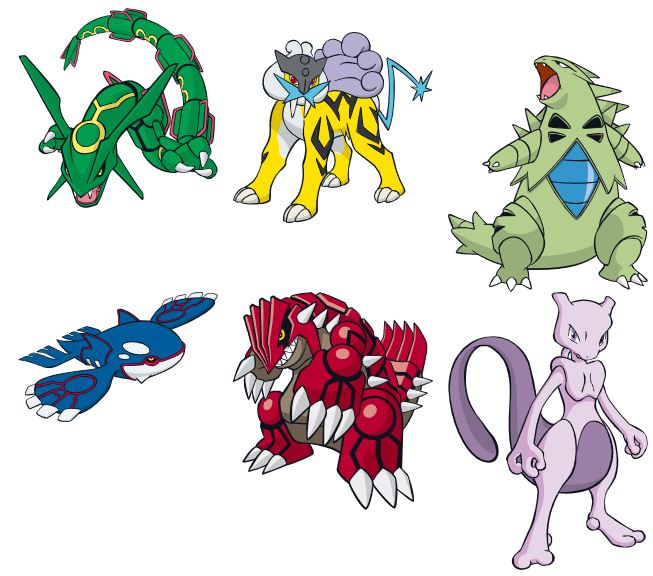A new version of my famous spreadsheet is there.
Now there is even a Lite Version without a lot of irrelevant attackers! (Sorry Murkrow.)
WARNING! Even if the v12 Lite version is faster than the full v11, it may happen that you need to exit and re-enter in order to get the spreadsheet updated. I’m working on a solution and hope v13 will be better. Feel free to try v12 Lite but be prepared to switch back to v11.
TL;DR:
Target Input -> Raid Boss + moves + weather.
Attackers Ranking -> sort by Raid Score.
As you probably know, it’s a theoretical spreadsheet. If you like exact rankings, I recommend to check the excellent Pokébattler raid rankings because they are based on simulations.
However, simulations are as accurate as their inputs are, and therefore it may be possible that some small parameter changes, e.g. Pokémon level or IVs, yield noticeably (although not completely) different results. A theoretical spreadsheet is sometimes more “robust” to parameter changes because it doesn’t depend on these specific values. That’s basically the main reason why I still maintain this spreadsheet.
Instructions
- Target Input sheet: enter the defender, its moves, how much % of fast and charge moves you will dodge, and the raid boss tier (enter 0 if it’s not a raid boss but a regular gym defender).
- The defender/boss name and its moves can be “None”. In this case, the spreadsheet calculates DPS and TDO assuming a neutral matchup. After the type effectiveness boost, “None” is not recommended. Please take the time to choose/type a Pokémon and both its moves, otherwise you may get wrong results.
- Optionally, enter your trainer level (default = 28 assuming you only use attackers level 30 or below) and your reaction time for charge moves (default = 0.7 seconds).
- Attacker Ranking sheet: it can be ranked by TDO% (relative Total Damage Output before fainting), DPS% (relative Damage per Second), Total Effectiveness (a combination of TDO and DPS) and finally by Raid Score, a heuristic I have devised to rank raid attacker effectiveness, which takes TDO into account but heavily punishes non-optimal DPS (because raids are mainly about not timing out).
- Hidden Power support: I have added a generic “Hidden Power SE” and a generic “Hidden Power 2xSE”. For Suicune I added “Hidden Power Water” too.
E.g. against Charizard, “Hidden Power 2xSE” means Rock Hidden Power. “Hidden Power SE” may be Water or Electric.
I’m not adding “Hidden Power NVE” etc. because I assume NVE Hidden Power sucks.
You have to figure out the specific type(s) by yourselves (with the help of the “Type Effectiveness” sheet) because I’m not going to add 15 Hidden Power movesets for each of the 20 potential Pokémon/Charge move combinations. - Weather boosts: it takes into account that moves of certain types are boosted by weather.
- Improved calculations: added energy generation from attacker’s HP lost and improved calculation of typeful damage received by the attacker.
- Up-to-date list of released Pokémon after the 4th Gen3 wave.
Nuts and (Thunder)bolts
What is taken into account:
- Type Effectiveness multipliers.
- Dodging fast moves (recommended for normal defenders only): if “Dodge fast moves” is greater than 50%, the Attacker Ranking sheet suggests how many fast moves fit between the defender’s fast moves and it compares efficiency with and without dodging.
- Dodging charge moves, including the effect of the attacker’s own fast move duration and the effect of the defender’s forewarning between animation start and “yellow flash”.
- Overcharge for single-bar charge moves: unlike most spreadsheets, this one takes into account that single-bar charge moves effectively waste half a fast move because all energy beyond 100 is not used.
- Overkill and overkill avoidance for all charge moves: unlike most spreadsheets, this one takes into account three issues with charge moves:
- Sometimes a charge move overkills the defender;
- Sometimes, to avoid overkill, the attacker has to delay the charge move and kill the defender with the (less efficient) fast move;
- Sometimes the attacker faints with the charge bar half full before being able to use its last charge move.
- Weather boost assumes no rounding of the nominal damage. That is: cloudy Counter deals 14.4 damage, not 14 as displayed.
- Energy gained by the attacker when being hit: I take the attacker’s HP (at Trainer Level + 2), deduct 2/3 of a charge move, and add half the remaining HP as energy gained from HP lost. Not simulator-accurate, but I’m quite satisfied by the results.
- Rounding bonus that favors quick low-power fast moves (e.g. Fury Cutter) over slow high-power fast moves (e.g. Dragon Tail): I estimate the power of a fast move and add 0.5 (average gain through rounding). Simple but effective. Not simulator-accurate, but more robust to small parameter changes than a simulator.
Planned for next versions:
- Make the spreadsheet faster: I plan to merge two sheets into one, hoping the new version will be faster than this one and than v11.
- Pokébox: Enter your own Pokémon, with level+IVs (or just CP) and compare them against a specific defender or raid boss. To know whether to use your level-32 Jolteon or your level-20 Raikou.
- Energy gained by the defender when being hit, in order to calculate the fast/charge damage ratio (important for split-type movesets). Now I just assume a fixed ratio depending on the number of charge bars.
Credits
Credits to /u/vlfph who made the original CP efficiency calculator until v4.0. I just walked his spreadsheet for some more hundred km and then evolved it 🙂
Credits to /u/celandro who made the awesome Pokébattler website and even hosts my articles.


Love the CYA sheet. Eagerly awaiting newer version.